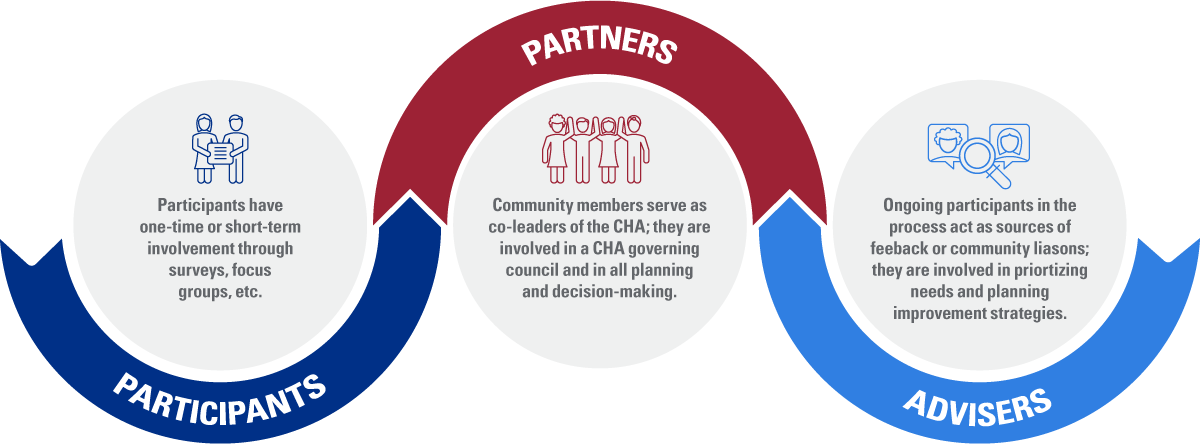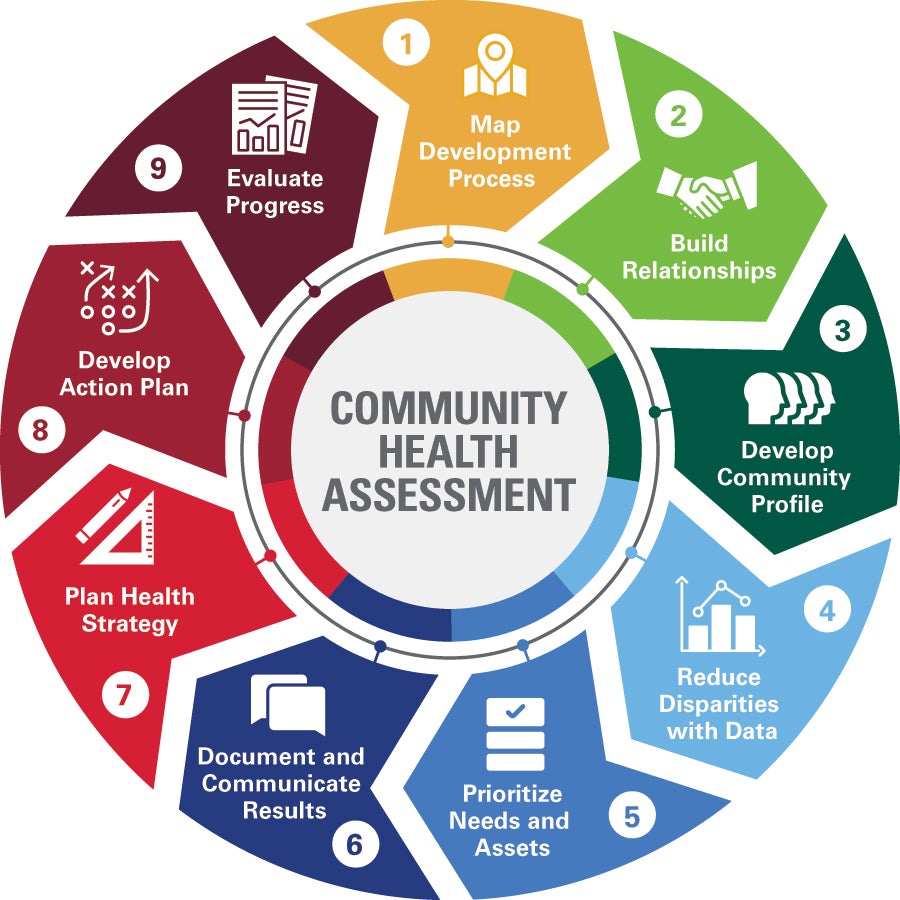Community Health Assessment Toolkit
Explore the American Hospital Association’s updated Community Health Assessment Toolkit — a nine-step guide empowering hospitals and health systems to collaborate with communities and strategic partners for effective CHAs and community health needs assessment (CHNA) compliance.
This toolkit reflects the understanding that while CHNA reporting is mandatory for nonprofit hospitals and health systems, the CHA process can benefit all hospitals working to address disparities in health outcomes.
About the Toolkit
A well-executed CHA can be foundational to better health outcomes for individuals; stronger, more enduring relationships between hospitals and community groups; and healthier, more vibrant communities for all.
With that in mind, this toolkit presumes that most, if not all, organizations using this guide will have previous CHA experience. We encourage those responsible for the CHA to deeply engage with this experience and build on what has been done in the past but not limit yourselves to past practices. The CHA is about continuously updating shared understanding of a community’s assets and needs. The process will evolve as experience accumulates.
Intentionality Leads to Better CHA Results
Health care professionals have long known the impact of societal factors on the health of individuals and communities. In recent years, consensus has emerged that these needs are best addressed through collaboration. Aiming for this goal, cross-sector and multisector groups have increasingly coordinated activities to address the various factors that impact health.
The importance of developing a process that is both intentional and explicit about the central role of reducing disparities in health outcomes in the CHA cannot be overstated. CHAs provide an undeniable opportunity to accelerate efforts on this front by working with the community to address policies and practices that create access, resources and opportunities to promote health and remove barriers for all people. The resulting CHA strategic document can yield synergistic results when aligned with system-level planning on population health, emergency preparedness and organizational strategy.
Tips
Make reducing disparities in health outcomes foundational throughout the CHA process.
- To work toward reducing disparities in health outcomes through the CHA, health care professionals and partners also work toward mutual understanding of their community’s residents and needs, engaging everyone in the community and then shifting their focus to jointly exploring root causes of health disparities.
- A well-executed and thorough CHA process is intentional in its collaboration and provides a roadmap to near-term and continuous community health care improvement, strengthening relationships along the way that lead to enduring results.
- Reducing disparities in health outcomes must be foundational, interwoven into planning and intrinsic to metrics. It must be organic — never an overlay.
Community Engagement Spectrum


